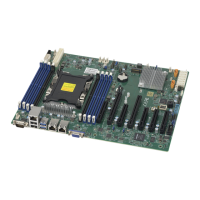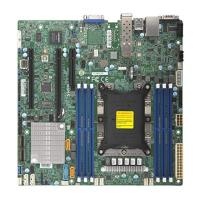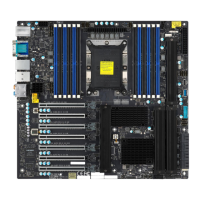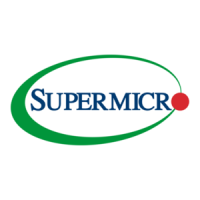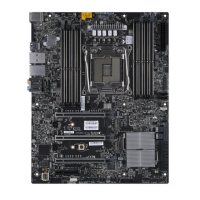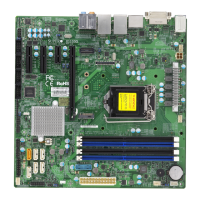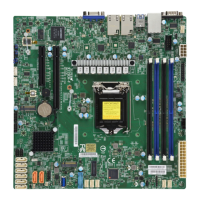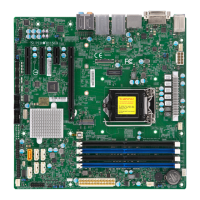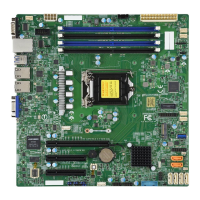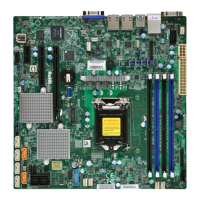15
Chapter 1: Introduction
Note: The table above is continued on the next page.
Motherboard Features
I/O Devices
•
Serial (COM) Port
• One (1) serial port on the rear I/O panel (COM1)
• One (1) front accessible serial port header (COM2)
• SATA 3.0
• Eight (8) SATA 3.0 ports at 6 Gb/s (I-SATA0~7 with RAID 0, 1, 5, 10)
• Two (2) SATA 3.0 ports with SATA DOM power (S-SATA0, S-SATA1)
• Video (VGA) Port • One (1) VGA connection on the rear I/O panel
Peripheral Devices
•
Two (2) USB 2.0 ports on the rear I/O panel (USB0/1)
• Two (2) USB 3.0 ports on the rear I/O panel (USB6/7)
• Two (2) front accessible USB 2.0 headers with two (2) USB connections (USB2/3, USB4/5)
• One (1) front accessible USB 3.0 header with two (2) USB connections (USB8/9)
• One (1) USB 3.0 Type-A header (USB10)
BIOS
•
256Mb AMI BIOS
®
SPI Flash BIOS
• ACPI 6.0, Plug and Play (PnP), BIOS rescue hot-key, riser card auto detection support, and SMBIOS 3.0 or later
Power Management
•
ACPI power management
• Power button override mechanism
• Power-on mode for AC power recovery
• Wake-on-LAN
• Power supply monitoring
System Health Monitoring
•
Onboard voltage monitoring for +12V, +5V, +3.3V, CPU, Memory, VBAT, +5V stdby, +3.3V stdby, +1.8V PCH, +1.05V
PCH, +1.0V PCH, CPU temperature, VRM temperature, LAN temperature, PCH temperature, system temperature, and
memory temperature
• 5 CPU switch phase voltage regulator
• CPU thermal trip support
• Platform Environment Control Interface (PECI)/TSI
Fan Control
•
Fan status monitoring via IPMI connections
• Single cooling zone
• Low-noise fan speed control
• Seven (7) 4-pin fan headers
System Management
•
Trusted Platform Module (TPM) support
• SuperDoctor® 5
• Chassis intrusion header and detection
• Server Platform Service
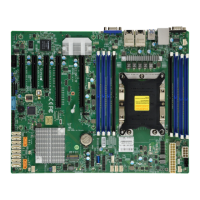
